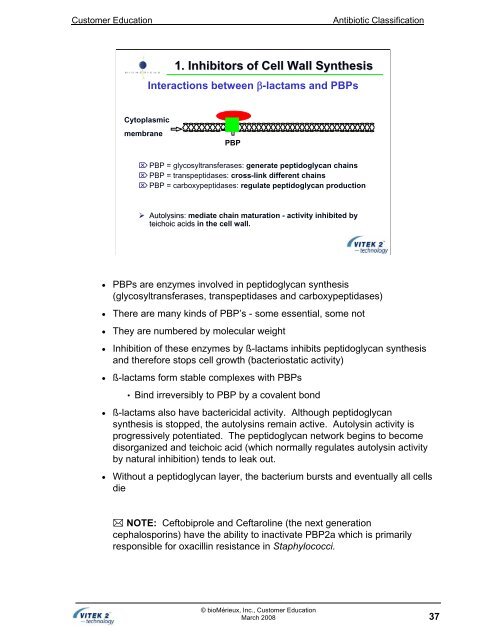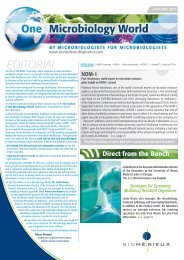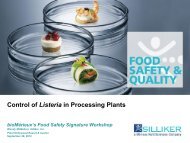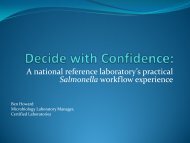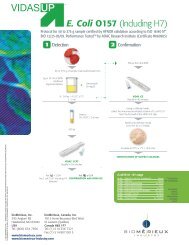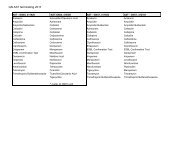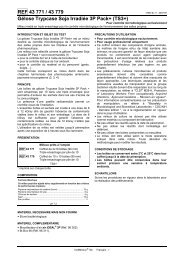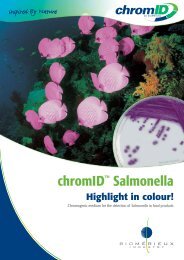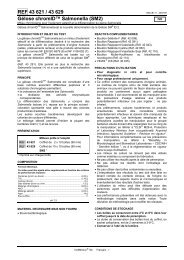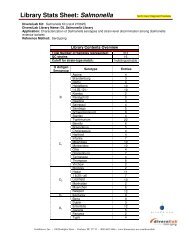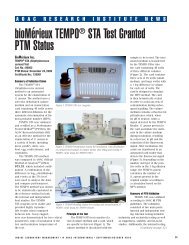Antibiotic Classification and Modes of Action - bioMerieux
Antibiotic Classification and Modes of Action - bioMerieux
Antibiotic Classification and Modes of Action - bioMerieux
Create successful ePaper yourself
Turn your PDF publications into a flip-book with our unique Google optimized e-Paper software.
Customer Education <strong>Antibiotic</strong> <strong>Classification</strong><br />
Cytoplasmic<br />
membrane<br />
1. Inhibitors <strong>of</strong> Cell Wall Synthesis<br />
Interactions between β-lactams <strong>and</strong> PBPs<br />
PBP<br />
⌦ PBP = glycosyltransferases: generate peptidoglycan chains<br />
⌦ PBP = transpeptidases: cross-link different chains<br />
⌦ PBP = carboxypeptidases: regulate peptidoglycan production<br />
�� Autolysins: Autolysins mediate chain maturation - activity inhibited by<br />
teichoic acids in the cell wall.<br />
• PBPs are enzymes involved in peptidoglycan synthesis<br />
(glycosyltransferases, transpeptidases <strong>and</strong> carboxypeptidases)<br />
• There are many kinds <strong>of</strong> PBP’s - some essential, some not<br />
• They are numbered by molecular weight<br />
• Inhibition <strong>of</strong> these enzymes by ß-lactams inhibits peptidoglycan synthesis<br />
<strong>and</strong> therefore stops cell growth (bacteriostatic activity)<br />
• ß-lactams form stable complexes with PBPs<br />
• Bind irreversibly to PBP by a covalent bond<br />
• ß-lactams also have bactericidal activity. Although peptidoglycan<br />
synthesis is stopped, the autolysins remain active. Autolysin activity is<br />
progressively potentiated. The peptidoglycan network begins to become<br />
disorganized <strong>and</strong> teichoic acid (which normally regulates autolysin activity<br />
by natural inhibition) tends to leak out.<br />
• Without a peptidoglycan layer, the bacterium bursts <strong>and</strong> eventually all cells<br />
die<br />
� NOTE: Ceftobiprole <strong>and</strong> Ceftaroline (the next generation<br />
cephalosporins) have the ability to inactivate PBP2a which is primarily<br />
responsible for oxacillin resistance in Staphylococci.<br />
© bioMérieux, Inc., Customer Education<br />
March 2008<br />
37


